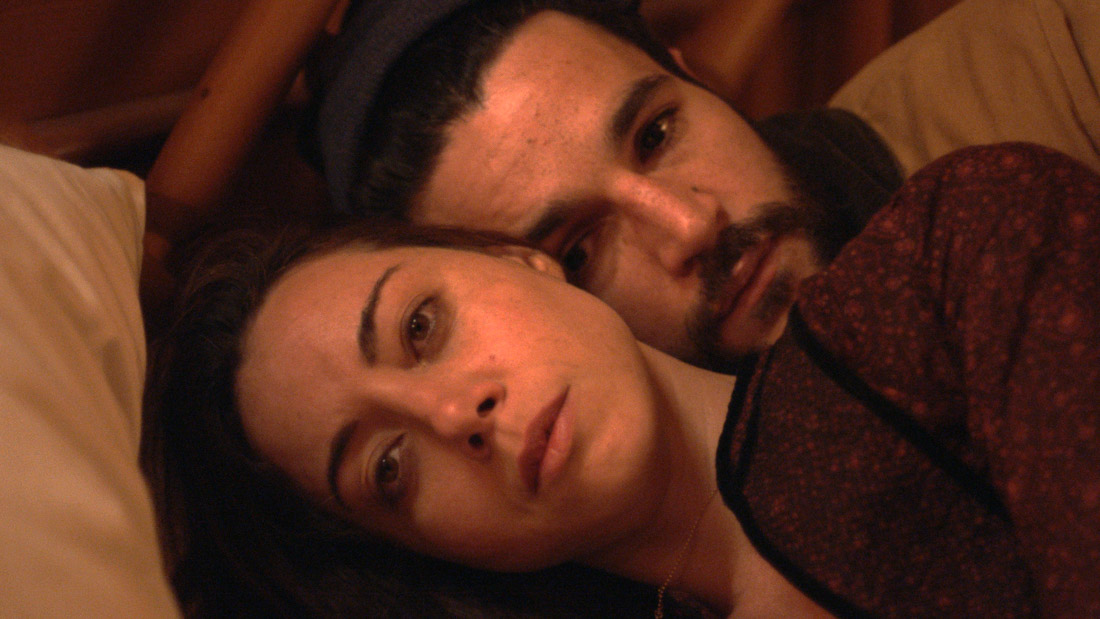
News
Cambridge Residents Slam Council Proposal to Delay Bike Lane Construction

News
‘Gender-Affirming Slay Fest’: Harvard College QSA Hosts Annual Queer Prom

News
‘Not Being Nerds’: Harvard Students Dance to Tinashe at Yardfest

News
Wrongful Death Trial Against CAMHS Employee Over 2015 Student Suicide To Begin Tuesday

News
Cornel West, Harvard Affiliates Call for University to Divest from ‘Israeli Apartheid’ at Rally
Aubrey Plaza Turns Auteur in Hypnotic, Surreal ‘Black Bear’
Dir. Lawrence Michael Levine — 3.5 Stars

When sex and death are often coupled up in film; they clash and burn, usually ending in kicking-and-screaming terror. Director Lawrence Michael Levine knows this, and his film “Black Bear,” now available on VOD, sets up erotic sequences which spiral into extended, dizzying vignettes focused less on these disarming acts than the conditions in artistic communities which allow them to occur. In Levine’s film, putting these elements into art makes real emotional tensions gnarlier, scarier, and unrelentingly ambiguous.
This near-horror film starts like they always do: In the woods, two white people meet, flirt, and begin to plume their tortured psychological depths in a secluded house where no one tells much truth until it comes time to drink, bicker, and kill. Audiences might think they know the jig here. But the film snares those expectations into a trap by twisting the haunted-house formula into a piece patterned with Tennessee Williams-esque unhappy couples, surrealist tension over gender, and a twist which shifts the film into a meditation about the extractive mechanisms by which indie movies can be made — to say nothing of Hollywood.
The scene: Allison (Aubrey Plaza), an enigmatic film director, visits Gabe (Christopher Abbott) and Blair (Sarah Gadon)’s lake house, and over one hypnotic night, they debate the meaning of film, death, and women’s autonomy. Wine is poured, blood shed, and a black bear emerges.
The film marks “part one” and “part two” through onscreen title cards, and watching part one is akin to getting your funny bone pricked until it tingles. Sound design here serves uncanny ends: The dialogue mix is close to the audience at all times, no matter what distance actors have from the screen or each other. It’s subtle, but it forces the realization that all are trapped inside this austere echo-chamber. Cinematographer Robert Leitzell’s exacting close-ups and handheld tracking shots give the towering house its size, which, thanks to Tracy Dishman’s minimalist production design, seems to enlarge in depth as tension festers.
In part two, where the characters are revealed to be on a film set, Levine’s script and Matthew L. Weiss’ editing drops audiences into gut-level déjà vu. Now Allison is the actress, Gabe is the director and tortured husband, while Blair is the co-lead. Gabe and Allison have spent their entire fortune on this film, and Allison is in a rut as they rush to finish. The focus turns to the final night of filming this movie, which is a tilted version of the events of part one. It is hard to track what is exactly happening on this set: everybody's personalities overlap while inexplicable images (smashing coffee cups, for one) jolt and recur to further dislocate the viewer. As Allison’s emotional worries increase, the film gets more abstract: akin to dream logic, the two halves of the film blur into an ambiguity that can be felt, not explained.
Plaza anchors the whole thing through a performance so intricately wound and fiery it could shatter a glass. Her comedy is smartly restrained; in other projects, she pries deep into wry, dark humor, but the claustrophobic script mostly denies her this strategy.
“How can you make something if you never think about it?” Blair asks Allison in the first half. The women’s performances are brilliant exactly because they blur the line between feeling and thought. Gadon is on full, high-strung display; the pregnant Blair’s impulse refilling of red wine is macabre, and her second-act plan, pretending to have an affair with Gabe to hike up Allison’s onscreen performance, is as brainy as it is diabolical. Their acting asserts how women onscreen navigate both the camera and the violent male gaze while the gap between them coalesces into an unwinnable game. Given this thematic richness, the film would’ve benefitted from a scene, however subtle, where Allison and Blair go at it alone.
There are always racial politics running through a room of white people screaming at one another. In the film’s second half, the crewmembers of color all either get high or console the erratic white actors. While this might be read as racist, it signifies how they survive inside these swirling, tense atmospheres; their labor literally makes the white onscreen melodrama possible. Either way, Allison’s drunken sexual pursuit of Baako, one of few Black crew members, is deeply alarming and the level of potential violations runs high, until the film pulls back, mercifully lets him escape, and lets her go wild all by herself.
There is no formal climax after Allison, in a bravura monologue, collapses to the floor in front of the crew. After a few more unsettling moments, the sensuality and violence are turned up to the most extreme, but never fully explode as in other haunted-house flicks. This proves the film’s mission: Wasn’t the tension enough? Bloody catharsis after such wrenching emotional pain seems, well, gratuitous. The lack of an immediate answer, and Allison’s final, self-aware stare at the camera, remains exactly, devastatingly, the point.
Want to keep up with breaking news? Subscribe to our email newsletter.
